While water is life, having it around some products, especially electronic products, is something manufacturers detest. The immediate environment of many products demands that the products have ruggedness and waterproof ability. Therefore, you get to see manufacturers use waterproof enclosure designs in their manufacturing process.
Waterproof enclosure design comes with understanding many things. As a layman or a beginner in this sector, you should know about the rating systems, how to make a waterproof enclosure, and the necessary materials. Therefore, this article would introduce the previously mentioned factors. You should continue reading to familiarize yourself with how the rating system works, waterproof closure seal design, and how to make a watertight seal.
How is Waterproof Grade Divided?
The rating system is a term that qualifies many electronic products based on their ruggedness. As related to this material, it ideal to divide them based on their waterproof ability. Without the rating system, using ruggedness and waterproof properties is a simple marketing term. For example, it is impossible to know the extent to which a product can withstand water when submerged. However, with a rating system, you can know about the extent of such properties. The two popular rating systems that we will discuss are IP and NEMA rating systems.
IP Rating System
People using electronic products would be familiar with the IP rating system. It is highly possible to have seen an inscription on their device with IPxx. This inscription is what manufacturers use to judge if an electronic product water seal design is effective and the extent of its effectiveness.
IP rating stands for Ingress Protection (IP) ratings, and from the above example, it has two letters, “IP” and two digits, e.g., IP67. The first number shows protection against physical objects such as dust and dirt. The second number shows protection against a liquid environment.
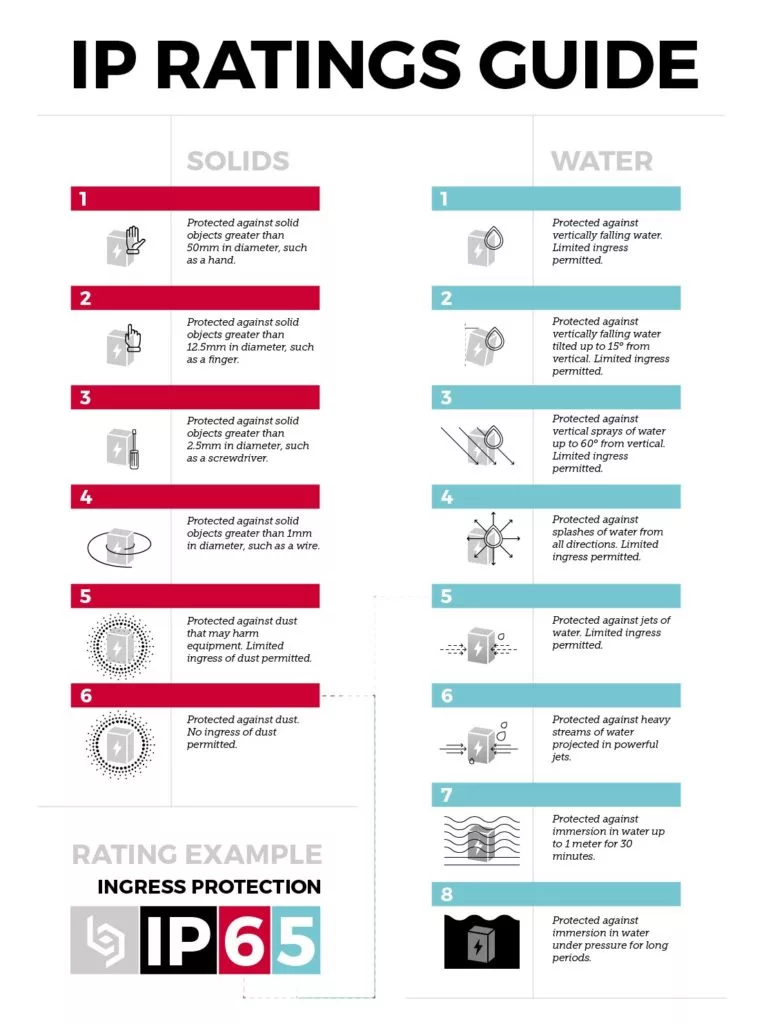
The higher the IP rating, the better the sealing design. For example, a product with an IP32 rating has lesser protection when compared to the same product with an IP67 rating.
NEMA Rating System
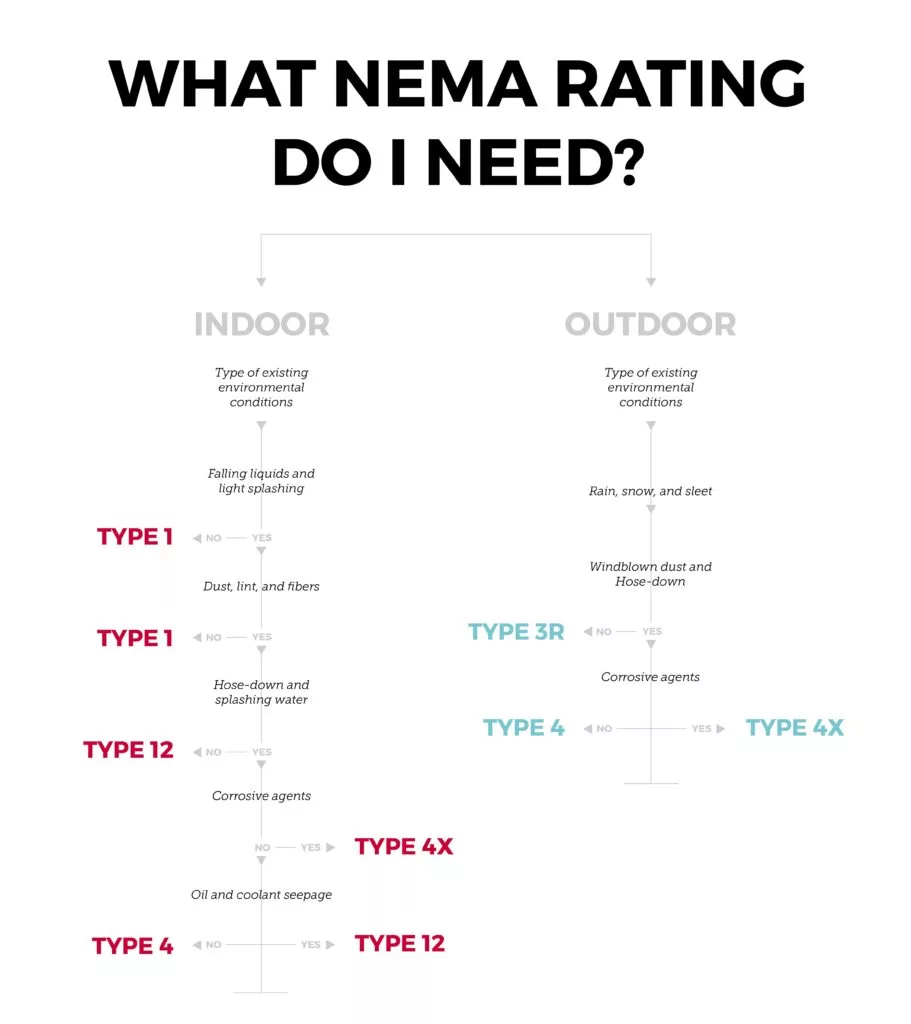
NEMA is an acronym for National Electrical Manufacturer Association, and its rating system also shows how protected a product is. Unlike the IP system of rating, the NEMA rating system is majorly for industrial products. The IP rating system estimates the protection a product has from water and physical parameters such as water and dust. However, the NEMA rating system goes a little further as it deals with exposure to parameters such as ice, corrosives, oil.
Before using the NEMA rating system, you should know the following:
- Whether the product is an indoor or outdoor one
- Element exposure
- If it will be hosed down
- Whether there is a chance of exposure to corrosive agents, oil, and coolant
NEMA rating system can be in terms of indoor and outdoor use. For indoor use, we have a rating from 1-13, which shows an increase in the degree of protection from dust and electrical shock, i.e., the higher you go, the better the protection. For outdoor use, we have NEMA 3, 3R, and 3S. NEMA 4 is used for products used under conditions such as high-pressure water.
Waterproof Enclosure Seal Design
Using a water seal design comes with understanding the various ways of getting things done. There below are a few ways you can make a watertight seal.
O-rings
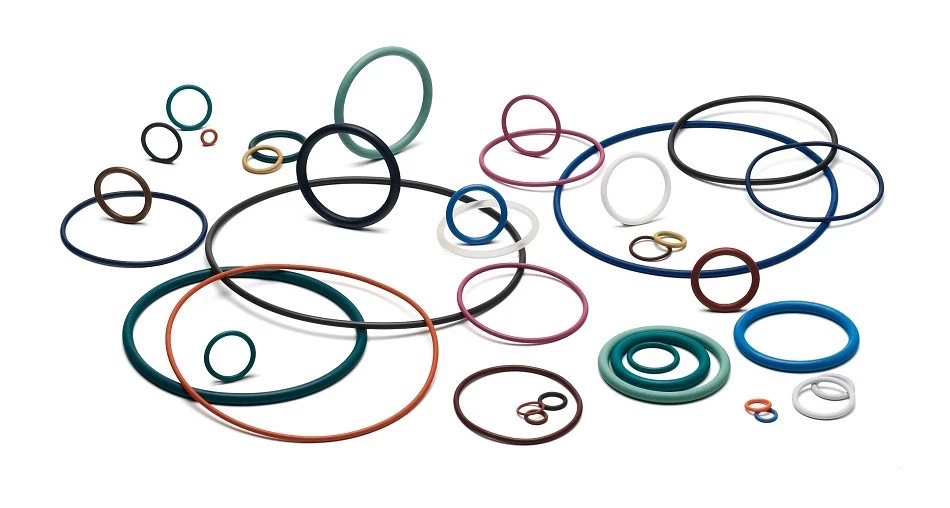
O-rings are important in water seal design and also for repairing things. They are very popular, which shows that they are widely used. They have one shape but come in different sizes. An O-ring has two numbers that show its inside-diameter and outside-diameter. O-rings are easy to install, and they come in two types: Static O-rings and Dynamic O-rings.
· Static O-rings
If your water seal design is for circular products, using a static O-ring is ideal. Static O-rings are seals that the mating gland parts do not move relative to one another. Therefore, there is no movement on the sealing surface.
· Dynamic
Dynamic O-rings, unlike the Static types, move concerning their mating gland parts. Therefore, the material needs more lubrication. The materials also must be tougher than the materials used to manufacture static O-rings.
- Major Differences between Static and Dynamic O-rings
Understanding the use of static or dynamic seal rings comes with knowing their differences. Below are the major differences that help you make a watertight seal when using the two seals.
- Because dynamic O-ring moves constantly, the materials used in the manufacture must be tougher.
- Dynamic O-ring gland must have a surface finish that is not having abrasive properties. If they have an abrasive surface, it can lead to the development of wear and tear. This is, however, irrelevant in static O-ring since it doesn’t move.
- Dynamic O-rings need more maintenance than static O-rings.
- Even though the two seals need lubrication, Dynamic O-rings should be more lubricated.
Gasket
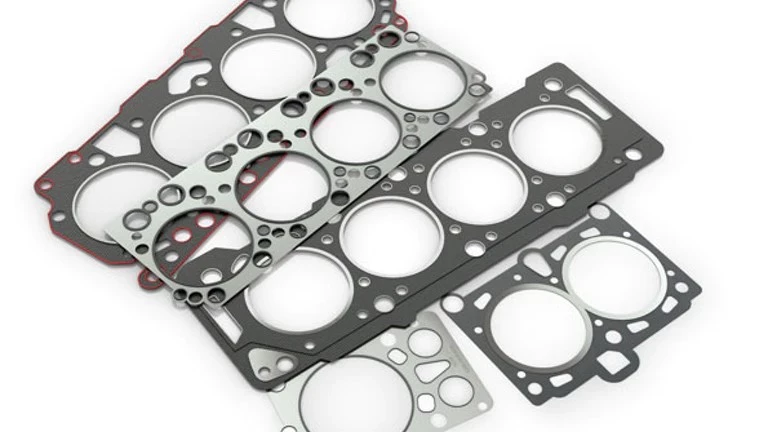
A gasket as a sealant is an adhesive glue, paste, or spray used in holding mechanical joints together. It can be used together with or without other types of sealants, and with or without, it reduces the tendency of mechanical breakdown when the parts rub together.
A gasket is ideal for complex face-to-face seals involving multiple cavities. This is one area they excel in more than O-rings. However, you have to consider factors such as compression, thickness, and tolerances of the joints to be mated to use them. Generally, gaskets are custom. Therefore, you don’t have to worry about constant calculations.
Button
Buttons are used in directional pads, triggers, panel switches, and they are ideal sealants for those that worry about interfacing. They are also cheap and easy.
Depending on what they are to be used for, buttons can be made of different materials. For example, for low-pressure waterproof button design, molded rubber buttons are used as a sealant. However, for heavy-duty waterproof button design, the button can be made of harder materials.
There are many waterproof button designs, and they are usually worked in with dynamic O-rings. However, it would be best to use them with caution since many seals can lead to seal failure.
Material Selection
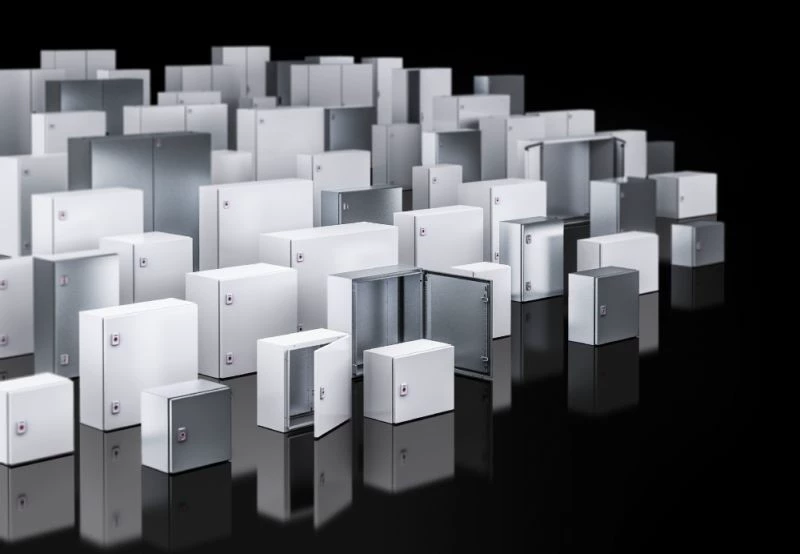
Knowing and selecting the right materials comes with understanding the necessary factors that you should consider before selecting the right materials. this will be in two sections. One will be about the factors that aid selection, while the other will be about the common materials you can use.
Factors to Consider in Material Selection
- Stage of Development
The stage of development determines the material you are using. For example, during the prototype development stage, a low-level material that is cheap is used to get the right fit, function, and aesthetics. Therefore, you wouldn’t worry about the water seal’s effectiveness, and you will get to know about the error easily. You can then use the original materials when done.
- Use and Design Guide
The design guide you use in manufacturing the product decides the type of materials you choose. For example, high-pressure product enclosure design require CNC machining to control the surface quality.
- Durability and Environment
Durability has a relationship with the environment that the material will be used. For environments that require high durability, metallic waterproof enclosure materials should be used. Material selection also depends on whether the materials will be used outdoor or indoor.
Common Materials Used for Waterproof Enclosure
Based on the factors explained above, the two major types of materials used in product enclosure design are plastics and metals.
Plastics
Plastics are a more versatile choice as enclosure materials since they have little requirement. They are also resistant to corrosion and are used where metallic materials can be problematic. However, they are not very strong when compared to metal enclosures.
Metals
The common metallic waterproof enclosure materials are steel, Aluminum, and Stainless steel.
- Steel
Steel material is used when they are a lesser tendency of having corrosion. In conditions where there is a high chance of corrosion, steel is not ideal since it becomes more susceptible to the condition when the surface is damaged. Steel is also strong and robust. Therefore, it is ideal for making enclosures resistant to scratch or tainting the surface properties.
- Aluminum
Aluminum is a better enclosure for those that are looking for stability in saltwater. It is corrosion resistant and has better physical attributes. For example, it has a lightweight. However, it is not ideal for environments that contain strong alkali since it readily reacts with it.
- Stainless Steel
Stainless steel is ideal for the same situation seen in steel. However, it is better suited for environments with a high chance of corrosion, such as saltwater. They are the most durable waterproof enclosure, which is evident since they can outlast other materials.
Tips
Water sealing design, even though it is a high-performance process, has simplicity as its golden rule. This is very important, especially if you are new to sealing. Below are some tips that can help you simplify your design:
It Is Bad to Seal Something Completely
While you might want to seal a product completely, you should know that this is a bad idea. Complete sealing of products removes the way by which air vapor can get in and out. Therefore, there is a high tendency for the product to blow up due to air pressure change.
Take Advantage of Circular Shapes
Circles are the easiest opening you can work with. The reason is that there are many waterproof enclosures you can use. These enclosures are easy to use, popular, and cheap. For example, you can use standard O-rings and robust radial type seals to get a uniform sealing force.
When Possible, Avoid Complex Sealing
Unless it is necessary, you should avoid complex seals. It would be best to make sure that the components that need sealing are not more than three. The reason is that the higher the number of parts that you need to seal, the harder it is to achieve uniform sealing.
Gaskets Need Supports
If you are using a stand-alone gasket, you need to support it on all sides. If you don’t do this, you can have seal failure due to gasket squirting as it pulls out of the pinch zone.
Conclusion
Waterproof enclosure seal designs is necessary for people who need products with waterproof property. By going through this article, you will have a basic understanding of the rating system, water seal design, and how to make a watertight seal. With this knowledge, you can make your waterproof product. However, to obtain the best result at a low price, you should utilize our services. Upload files to get an instant quote for your design, and consult with our support team for manufacturing advice. Email contact: [email protected]
FAQ
There are many ways you can make a waterproof enclosure. You can make use of enclosures such as O-rings and gaskets. You can also make use of overmolding or injection molding. However, there are times you might need to use the two.
The IP rating considered waterproof and used generally are IP65, IP66, and IP67. Weatherproof means you are protecting against high moisture and physical element content. Therefore, you need an IP rating with the highest numerical value.


